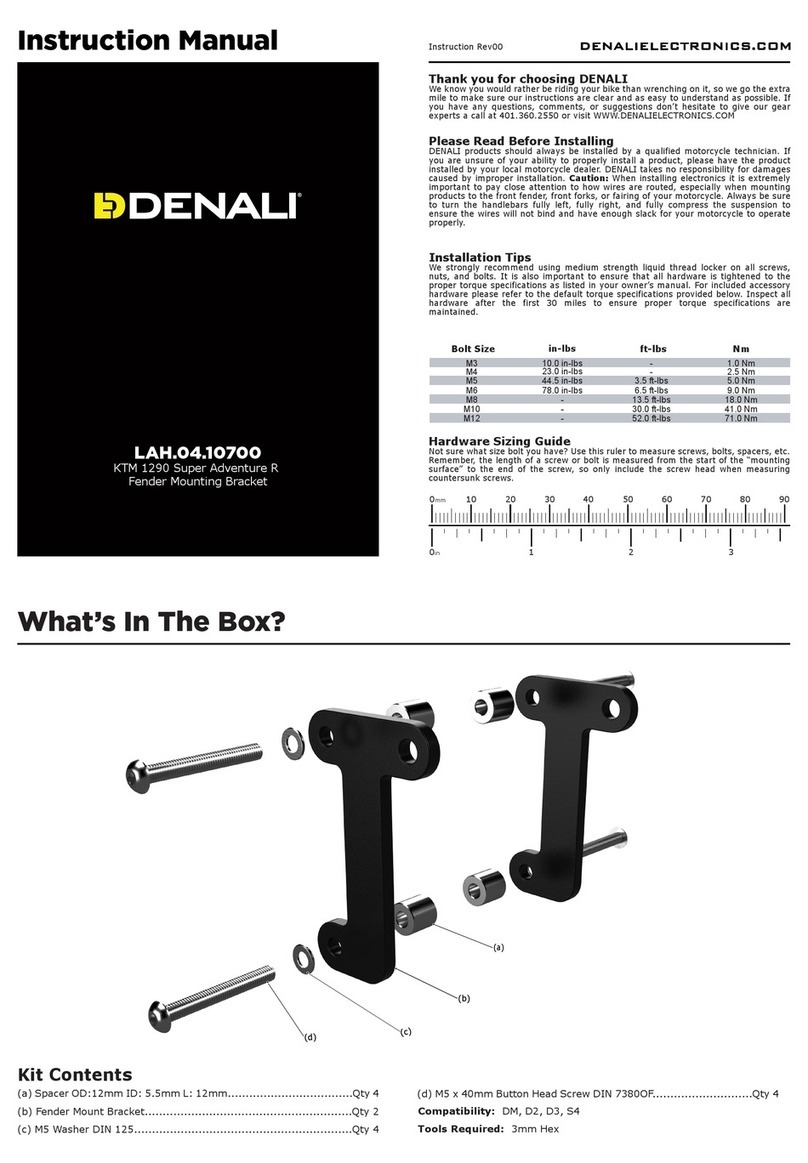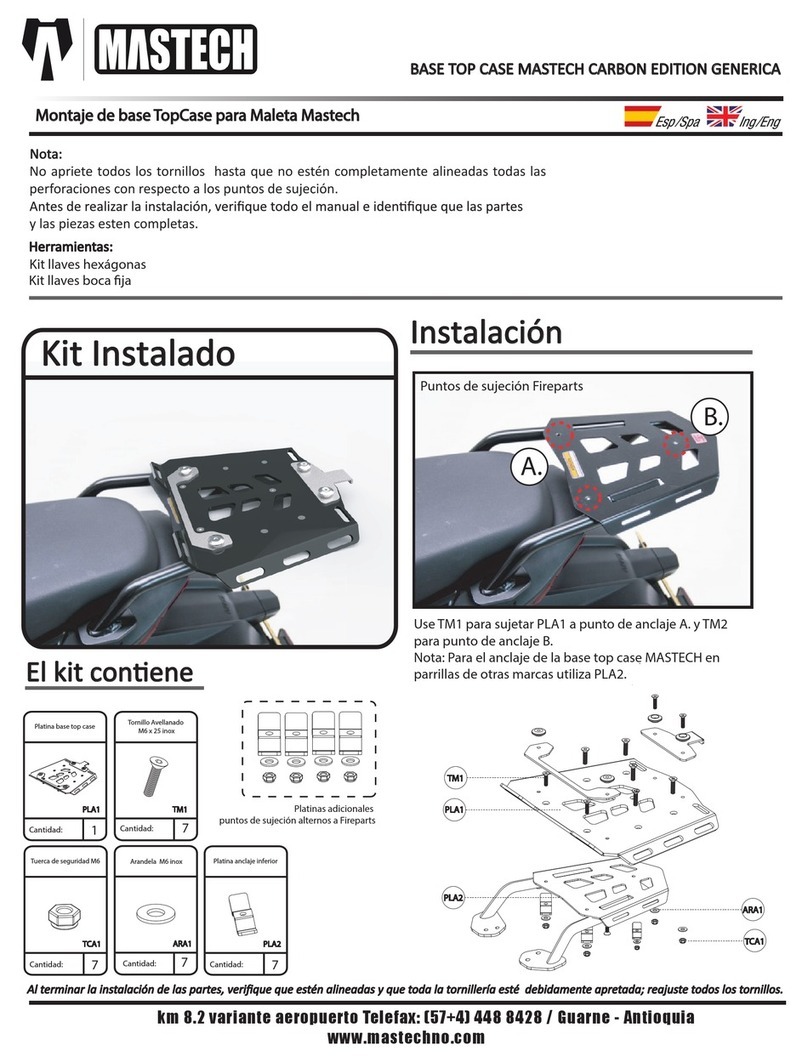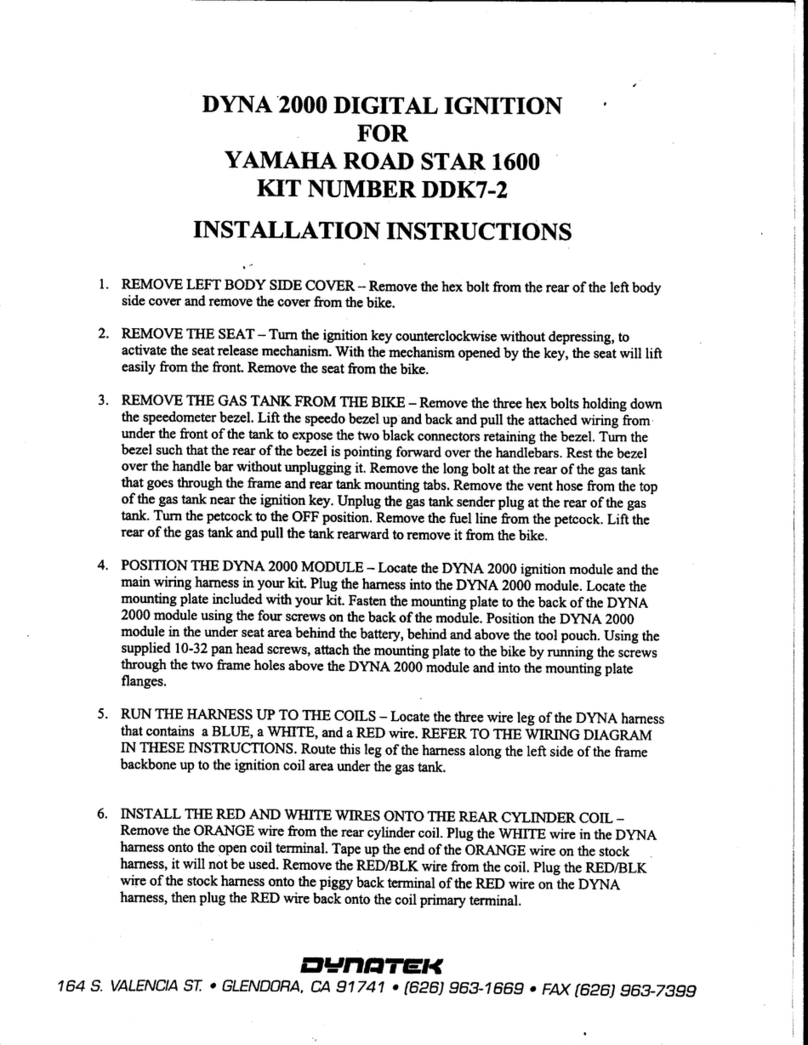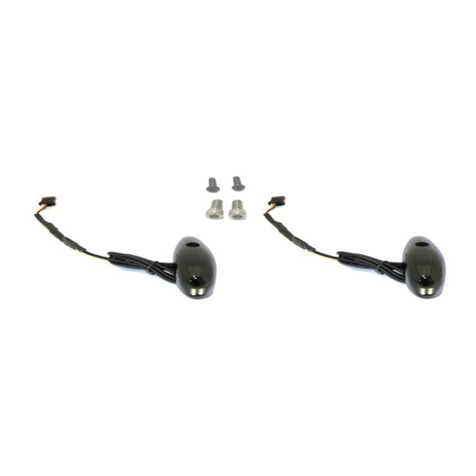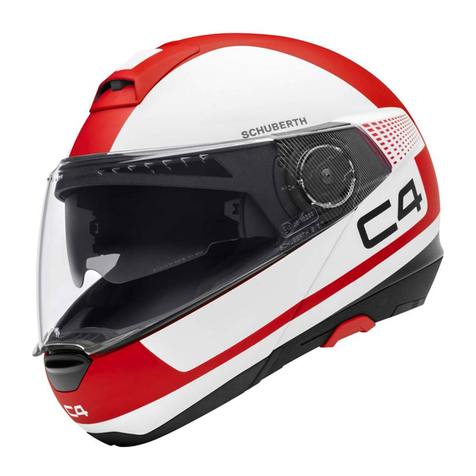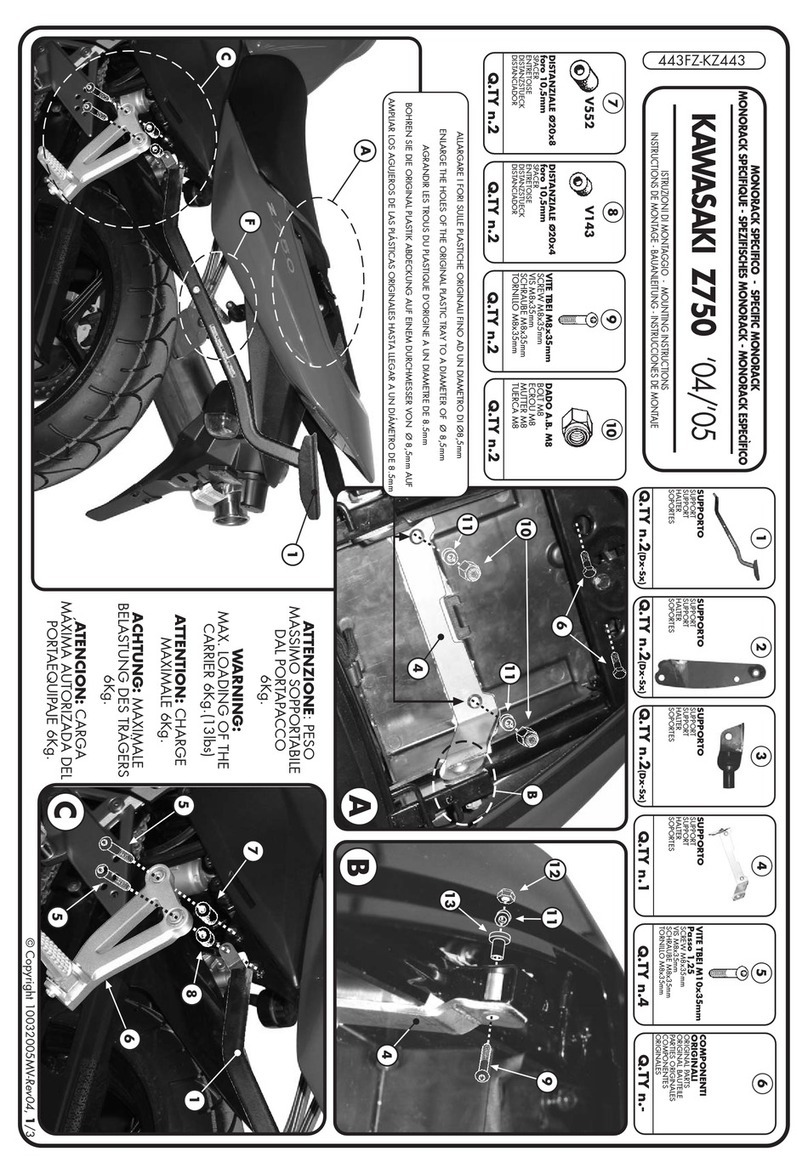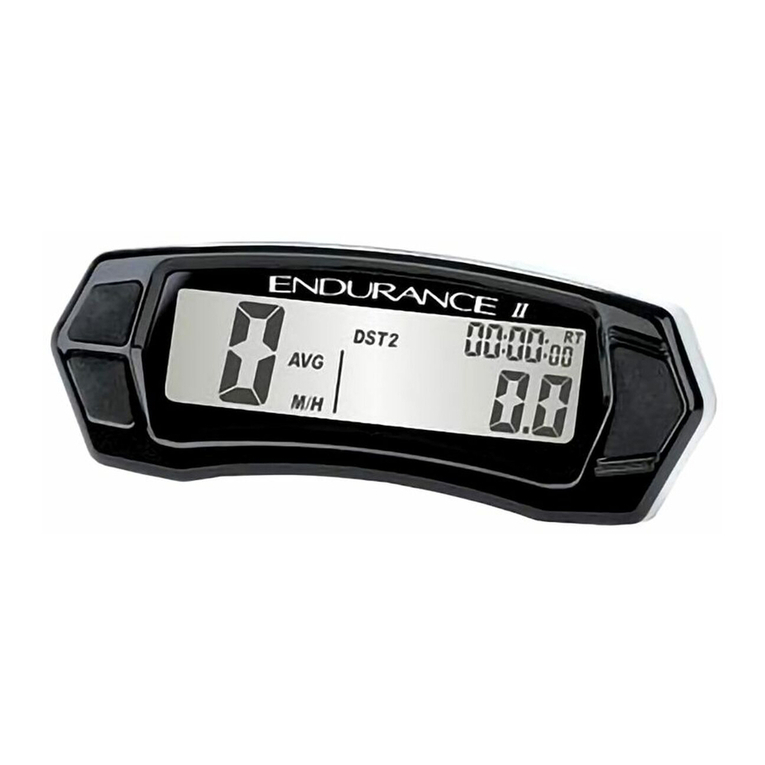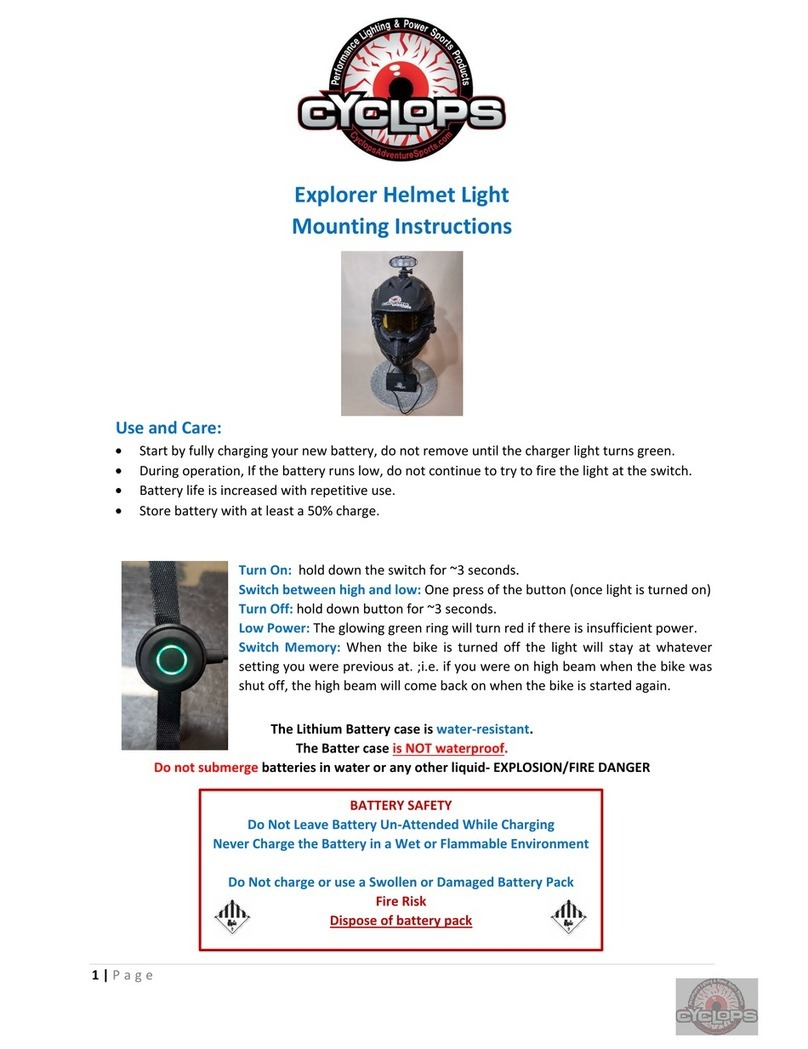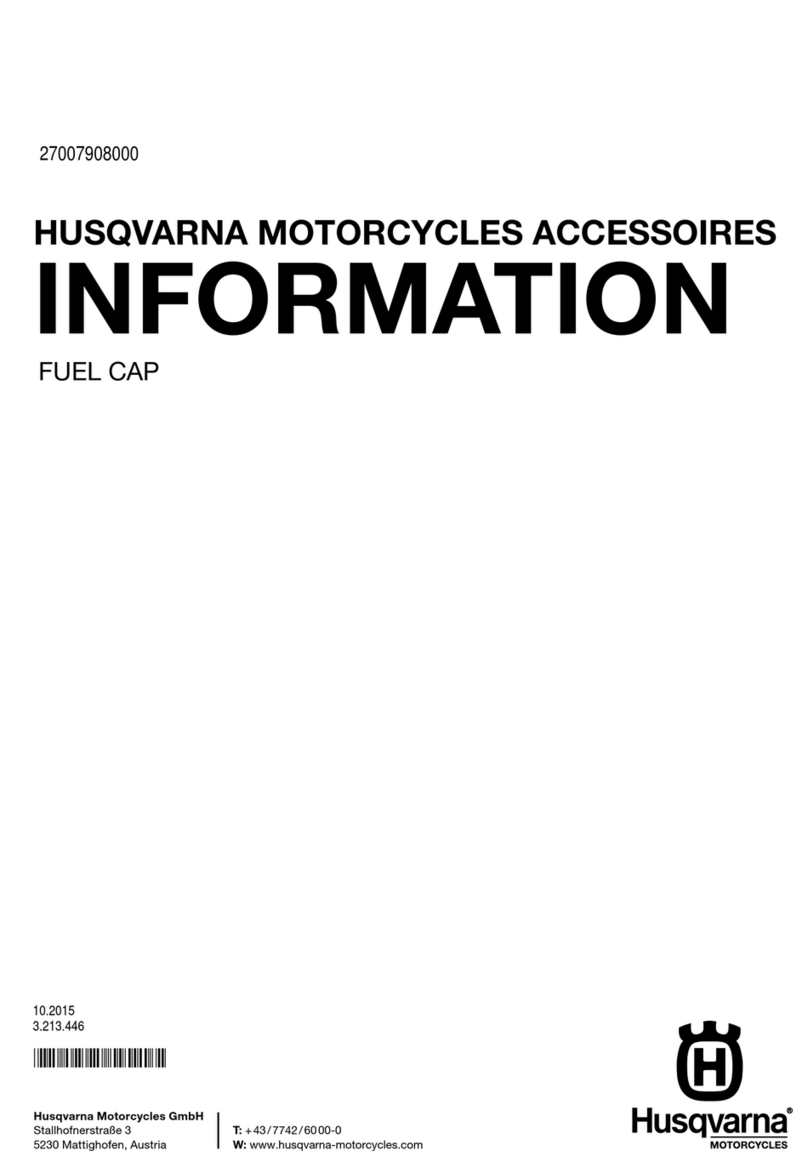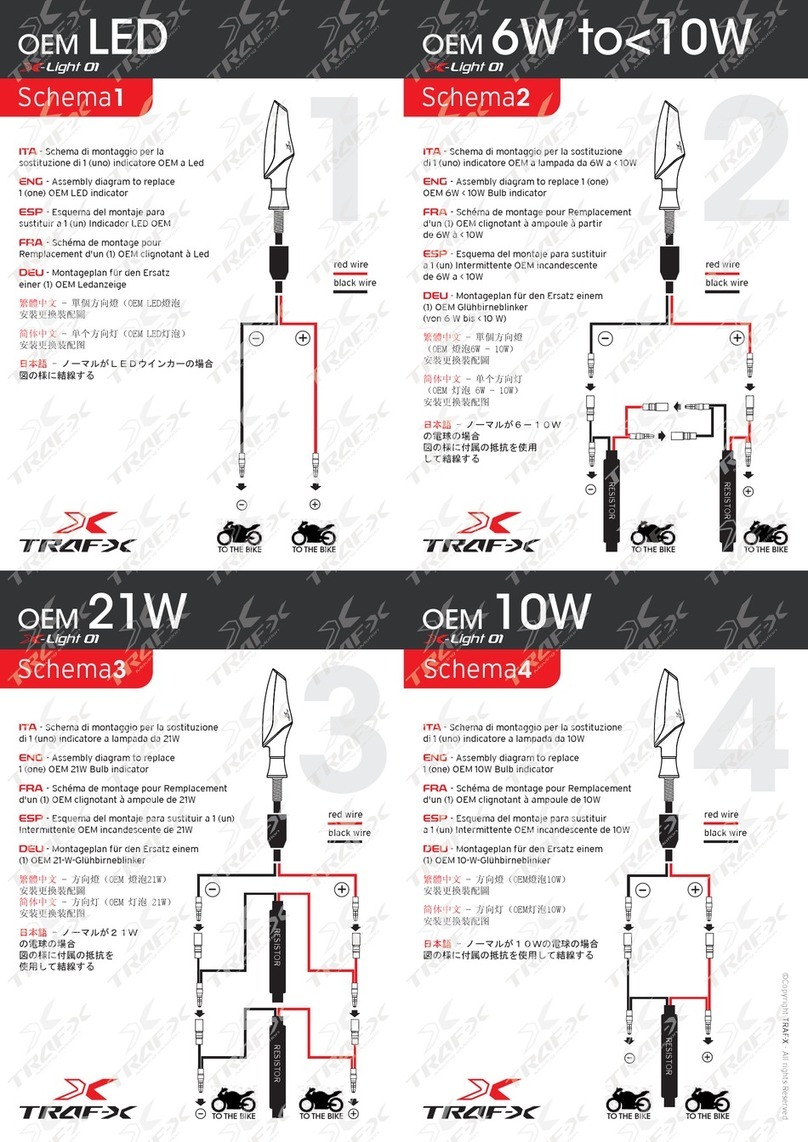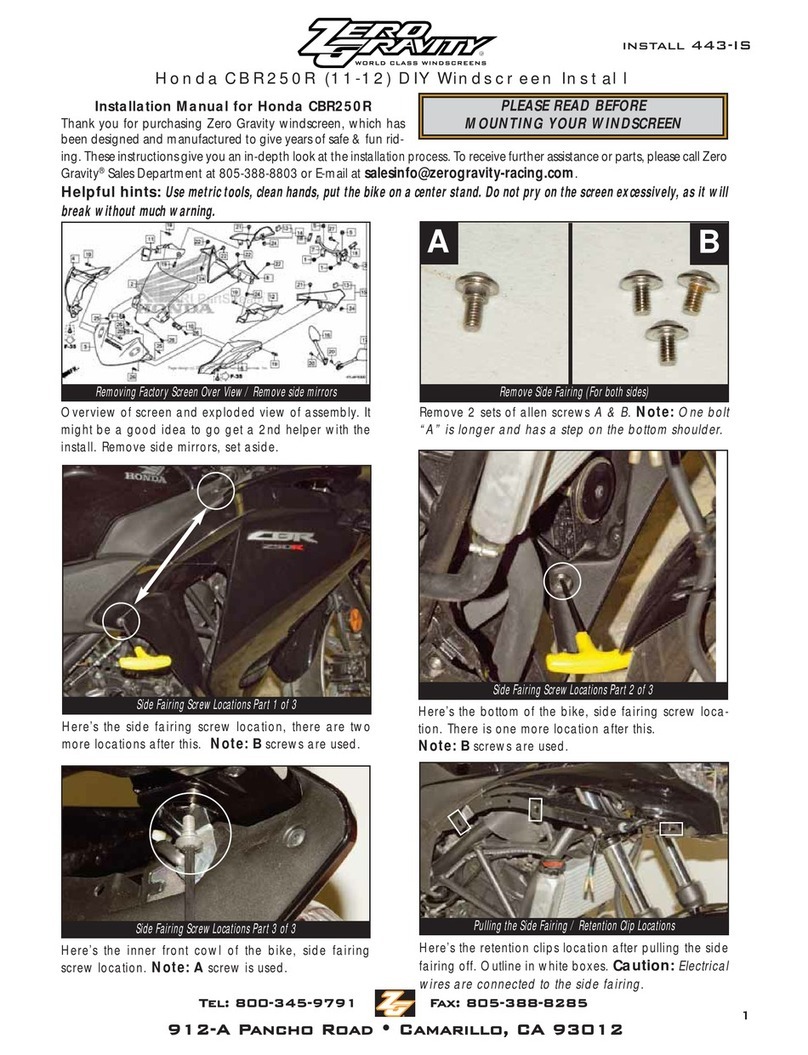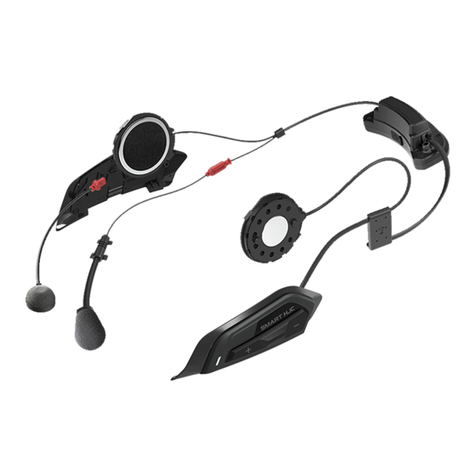ABM ergonomic style Superbike Kit Manual

• www.ab-m.de ••• info@ab-m.de •
Superbike Kit
Installation and safety information
for
Kawasaki Ninja H2 SX
from model year 2018

Installation manual Superbike™for Kawasaki Ninja H2 SX 2018-
• Revision: 00 • 13/02/2019 • © ABM Fahrzeugtechnik GmbH Page 2 of 8
Caution
Important safety advice:
Work undertaken on the steering and the brake system poses a safety risk. This work may only
be carried out by appropriately qualified personnel. Faulty work can have serious consequences
and may pose a threat to life and health. Only undertake this installation if you are sufficiently
qualified and have an official workshop manual as well as all relevant service notifications
available. Otherwise, we strongly recommend that the installation is carried out or at least
checked in a specialist workshop.
Brake fluid is toxic and may damage the surfaces of the fairing and other components. Use
suitable means to protect all parts against damage. Please observe the safety information of the
brake fluid manufacturer.
Use only fresh brake fluid taken from a sealed container. Always use new sealing rings which
comply with the specifications of the brake lines manufacturer. Never combine copper sealing
rings with aluminium fittings.
ABS brake systems should be bled solely in a garage authorised by the vehicle manufacturer.
Any work in relation to the installation, removal and tightening torque of original parts should
always be carried out in compliance with the workshop manual.
To ensure safe function, it is essential that all contact areas of clamp connections are clean, dry
and damage free during installation. Important: Make sure that nothing gets onto these contact
surfaces which decreases friction
(e.g. oil, silicone, care products, etc.).
It is essential that all clamp screws are tightened with the specified torque. The torque
specifications refer to dry screws and threads. The tight fit of all screw connections must also be
checked at every inspection.
It is your responsibility to check the product regularly and to determine if a service or
replacement is required.
Please remember that the yokes are safety-relevant parts of your vehicle. Check the handlebar
as well as the risers and yokes after a fall or collision and replace them completely at the
slightest indication of damage.
Never tie down the vehicle at the handlebar.
The Superbike Kit requires registration.
This product has been designed for a standard vehicle. ABM® Fahrzeugtechnik GmbH makes no
warranty or guarantee of any kind for any damages whatsoever arising out of the combination
with other component parts not tested by ABM, as a consequence of improper installation or
inadequate maintenance.

Installation manual Superbike™for Kawasaki Ninja H2 SX 2018-
• Revision: 00 • 13/02/2019 • © ABM Fahrzeugtechnik GmbH Page 3 of 8
1
Preparation
Please read the entire safety information and installation manual carefully.
A motorcycle not securely positioned can fall over during the following work. Therefore, make sure
that the motorbike is positioned on solid, flat ground and is secured against falling over and rolling
away.
Keep children and pets away from the work area.
Protect removed parts from damage.
Never remove the top yoke without first removing load from the front wheel as this could damage
the lower yoke.
Please note when disassembling individual parts which screws are used to mount them. Keep these
parts and screws and unless specified otherwise, reuse when reassembling.
2
Content and recommended accessories:
Special tool required?
Torque wrench
Modification time:
approx. 3-4 h
Throttle cable/cables/lines:
original
Shorten fairing:
no
Clutch cable/line:
new, enclosed
Shortening of
windshield:
no
Brake line:
new, enclosed
Riser/handlebar
BKH4/0429
Choke cable:
not available
Accessories:
Handlebar ends
Scope of delivery:
Top yoke with risers, clutch line, brake line, small parts.

Installation manual Superbike™for Kawasaki Ninja H2 SX 2018-
• Revision: 00 • 13/02/2019 • © ABM Fahrzeugtechnik GmbH Page 4 of 8
3
Installation
Remove the right-hand fairing and the
plastic covering under the head-lamp.
Remove all armatures and operating
elements as well as the accelerator cables
from the handlebars.
Tip: Lightly loosen the hollow screw of the
hand pump to facilitate opening later.
Pull off the left-hand rubber grip.
Tip: Lightly heat the rubber grip and
handlebar.
Remove both handlebars.
Remove all elevations.

Installation manual Superbike™for Kawasaki Ninja H2 SX 2018-
• Revision: 00 • 13/02/2019 • © ABM Fahrzeugtechnik GmbH Page 5 of 8
Screw in and tighten the provided screws
into the top yokes threads.
Mount the risers with the screws (M10) and
safety washers provided to the clamps.
Tightening torque 28 Nm
Make sure that the wide side of the risers is
facing forward.
Attach both clamps.
Insert the handlebar into the risers, align and
attach lightly.
Slide the operating elements and grip armatures
onto the handlebar and provisionally pre-
assemble everything.
Tighten the clamp screws (M8).
Tightening torque 21 Nm

Installation manual Superbike™for Kawasaki Ninja H2 SX 2018-
• Revision: 00 • 13/02/2019 • © ABM Fahrzeugtechnik GmbH Page 6 of 8
Drain the brake fluid.
Loosen the connections of the brake- and
clutch lines from the pumps, steel lines and
the ABS module.
Mount the provided Stahlflex lines according
to the specifications of the vehicle
manufacturer.
The brake line is run and fastened directly
from the hand pump to the ABS block.
Caution: To ensure a twist-free installation,
the fittings can be aligned once.
Reconnect the armature plugs.
After the installation of the brake system, the
bracket of the reservoir must be aligned in order
to bring it into a horizontal position.
Bleed the brake and clutch according to the
manufacturer's specifications.

Installation manual Superbike™for Kawasaki Ninja H2 SX 2018-
• Revision: 00 • 13/02/2019 • © ABM Fahrzeugtechnik GmbH Page 7 of 8
Stick on the left-hand rubber grip.
Before the final fixing of the handlebar and
the armatures, make sure that the handlebar
does not come into contact with any other
parts (e.g. fairing or tank), even in maximum
steering angle.
Attach the clamps.
Tightening torque 21 Nm
The cable harnesses of the armatures are run
in front of the fork.
Reattach all previously removed parts.
The final assembly of the operating elements
requires the drilling of holes for the centring
pins. To do this, align the operating elements
and mark the positions for the centring pins
(push onto the pins using grease). Now,
centre-punch the marked position and drill a
hole (diameter and depth are based on the
centring pin).
4
Final check
Make sure that all operating elements present on the handlebar are adequately positioned,
even in maximum steering angle. The brake pump and the reservoir must be located in an
adequate operating position.
Pay attention to the freedom of movement of the handlebar, its mounted parts and adequate
steering angle to each side. The handlebar must be able to be moved easily to the maximum
steering angle on both sides. Check the free play of the accelerator and clutch cables: In
maximum steering angle to both sides and with the engine running, the motor speed must
not change.

Installation manual Superbike™for Kawasaki Ninja H2 SX 2018-
• Revision: 00 • 13/02/2019 • © ABM Fahrzeugtechnik GmbH Page 8 of 8
After completing the work, the firm fit, function and tightness of all components and screws
must be checked. Make sure that there is sufficient brake fluid in the reservoir. Also check the
front wheel's freewheel and the functionality of the brake system. Further, the function of
the clutch, the throttle grip, the electric system and the anti-theft devices must be checked.
Afterwards, a test drive must be done! After completion of the test drive, all screw
connections must be re-checked for firm fit, tightness and all movable parts for adequate
freedom of movement. Re-test the front wheel's freewheel and check the brake system for
overheating. Check the brake fluid level in the reservoir for significant changes.
After approx. 100 km, the firm fit of all screw connections of the handlebar must be re-
checked against the specified tension values.
Table of contents

